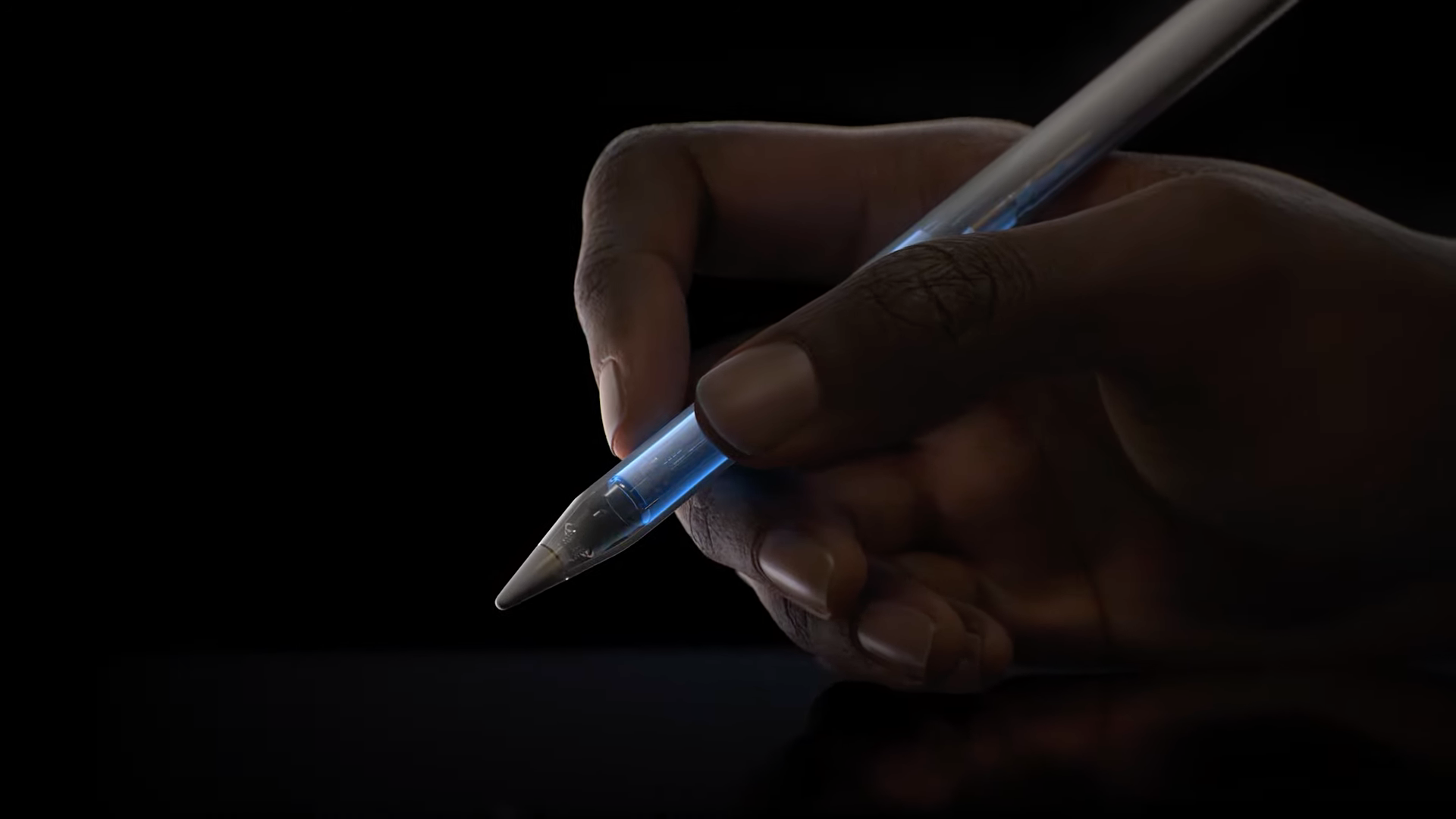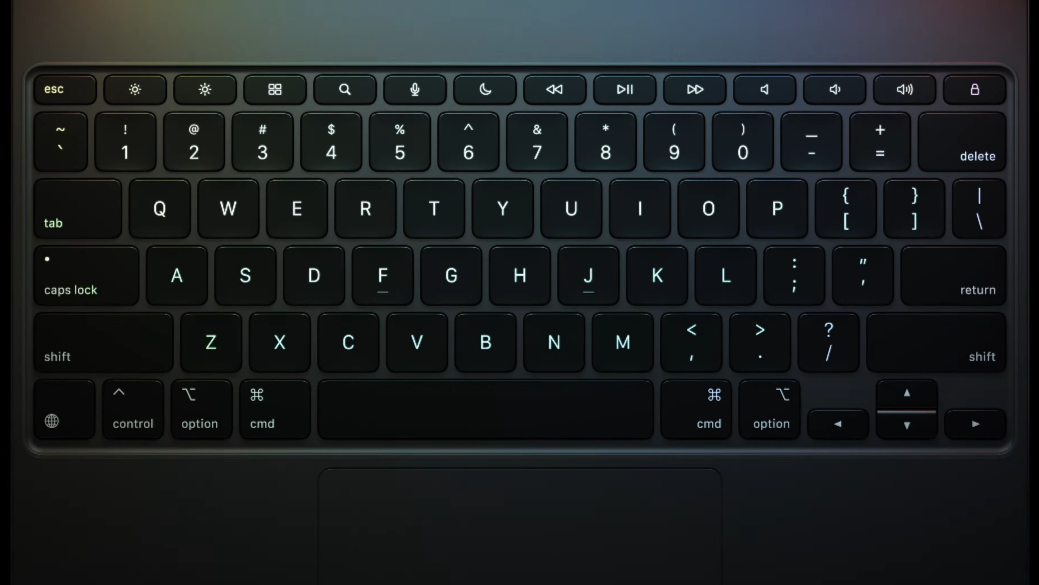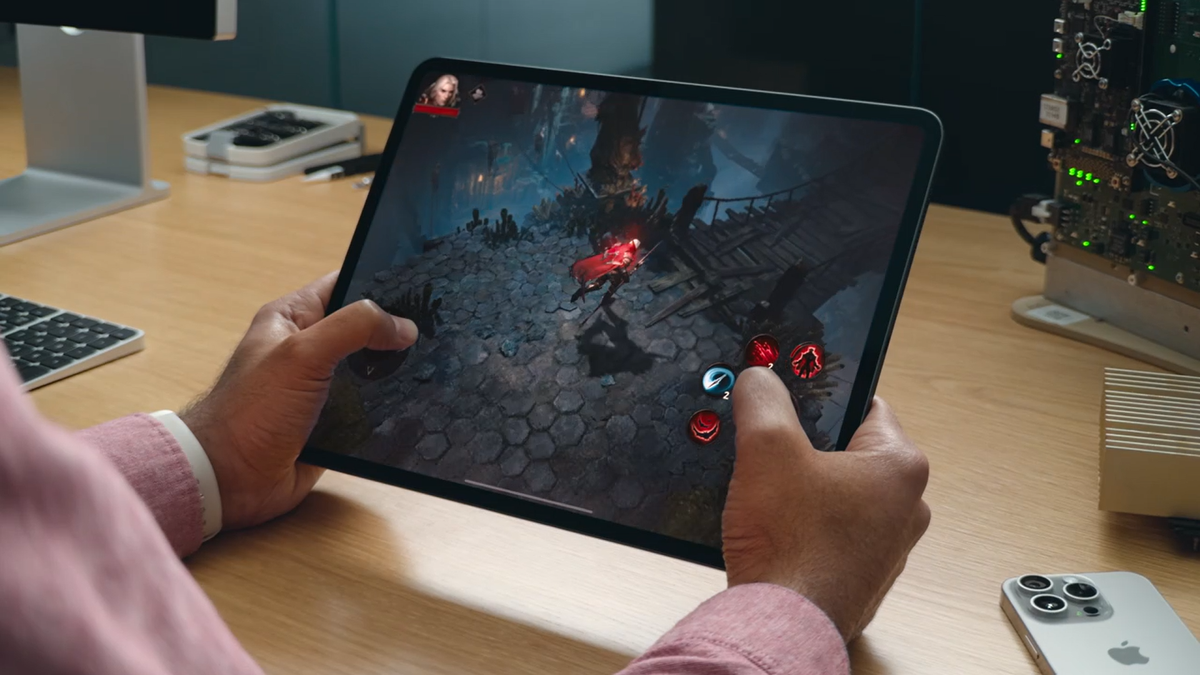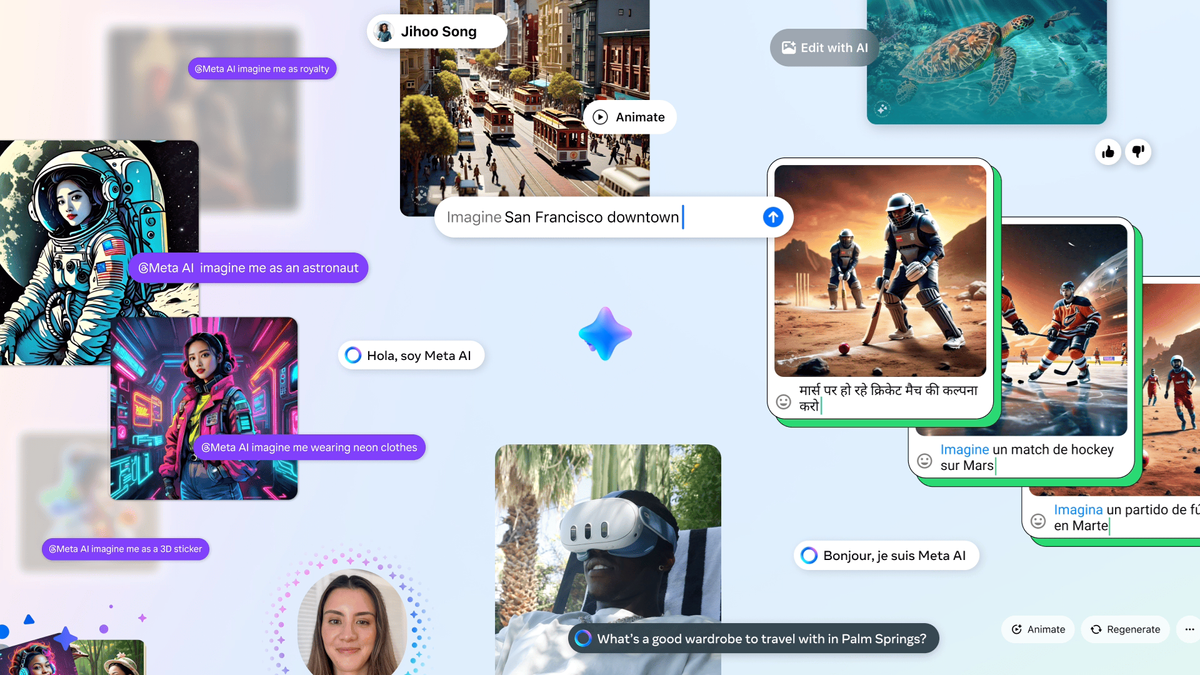Tim Cook described today's Apple iPad event as “the biggest day for the iPad since its introduction,” and hype or not, he might be right. After all, the Let Loose event saw the launch of new iPad Airs and iPad Pros, a new Apple M4 chipset, plus new accessories and software. No, it doesn't compare to what we expect to see at WWDC 2024, but it was a pretty big deal.
So what were the highlights (and lowlights) of the 40-minute presentation? Here's everything we learned from the May 2024 Apple iPad event.
1. The new iPad Pro 2024 looks really powerful and impressively thin…
Let's start with the big one: Apple announced the new iPad Pro in two sizes, 11 inches and 13 inches.
These are Apple's thinnest tablets, with the 11-inch model being 5.3mm thick (or rather, thin) and the 13-inch model being just 5.1mm thick; that makes them 0.6 mm and 1.3 mm thinner than the last generation models, respectively. In fact, Apple says the 13-inch model is the thinnest product it has ever created; yes, it's even thinner than the iPod Nano.
Another couple of records set by the 2024 iPad Pros are that they are the first to feature OLED display technology and they are also the first to use Apple's new M4 chipset, which represents a huge leap in performance over the powered Pro. M2 of 2022. tablets (more on both features below).
Both sizes can be pre-ordered today (May 7) – prices start at $999 / £999 / AU$1,699 for the 11-inch iPad Pro and $1,299 / £1,299 / AU$2,199 for the 13-inch iPad Pro inches, and orders will ship starting May 15.
2. …but the 2024 iPad Air has to make do with 2022 technology
In addition to the new iPad Pro models, Apple also revealed two new iPad Air 2024 tablets. Like the Pro, these come in 11-inch and 13-inch varieties, but that's where the similarities end. Obviously, there's no OLED display technology (don't expect there to be), but it's possibly surprising that the chipset is Apple's M2, which debuted at WWDC 2022, rather than last year's M3.
On the other hand, it's still fast enough for most uses and will have helped keep the price down to $599 / £599 / AU$999 for the 11-inch tablet and $799 / £799 / AU$1,299 for the one of 13.
And it's not like there's anything new here either. For one thing, there's the fact that the Air now comes in two sizes, for the first time. There's also a front-facing landscape camera (ideal for video calls) and horizontal stereo speakers with spatial audio. It will also come with up to 1TB of storage and will be available in blue, purple, Starlight, and Space Grey. Given the considerable savings over the Pro models, it might well make more sense for most people.
3. The new Apple M4 chip is a powerhouse
The iPad Pro has skipped a generation on the chipset front, moving from the M2 to the new M4, which arrives on Apple's tablet before (presumably) arriving on MacBooks and Macs later. That is something quite important for the iPad and represents a huge advance in power.
The M4 chip brings mesh shading, hardware ray tracing, and dynamic caching to the iPad, and has a 10-core CPU that Apple says is 50% faster than the M2. Meanwhile, on the graphics side, the 10-core GPU is supposedly 400% faster than that of the M2. Yes, 400%.
And then there's AI, because of course no 2024 release would be complete without it. Apple says the Neural Engine is capable of performing 38 trillion operations per second, making it one of the fastest NPUs on the market. This can only bode well for Apple's future AI-related advancements.
4. OLED technology
It's taken a while, but Apple's iPad Pro tablets finally have OLED displays, and they're not just any OLED panels. Rather, Apple has created the 'Tandem OLED' display to form the 'Ultra Retina XDR' display of the new iPads Pro.
Tandem OLED is so called because it places two layers of OLED pixels on top of each other to create a single consistent display. The benefit of this is doubling the screen resolution while mitigating concerns about OLED burn-in.
While OLED pixels are self-emissive, they tend to struggle to match the brightness of LCD or mini-LED panels, and increasing brightness requires pumping more power into the pixels, which increases the heat of an OLED display and can lead to the dreaded burn-in, where parts of a static image (think icons and taskbars) may be permanently visible on a screen, even when something else is displayed.
But by layering two OLED panels, individual pixels can run at a lower brightness than they would on a single-layer OLED display and still reach a maximum brightness of 1,600 nits on the new iPad Pros; That's much higher than even some of the best OLED TVs.
This tandem technique should also result in an OLED display that is more energy efficient and has a longer lifespan than traditional OLED displays. So not only could Tandem OLED offer an increase in screen quality over the previous generation iPad Pros, but it could also evolve OLED display technology as a whole.
5. Two OLED displays cost about $200 more than no OLED display
There is good news and bad news when it comes to iPad prices. On the positive front, the iPad Air costs about the same as the previous model: $599 / £599 / AU$999 for the base 11-inch model, which is unchanged from the 2022 version in the US. , but with a slight increase in the United Kingdom. and Australia (where it was £569/AU$929). However, you now get 128GB as standard, instead of 64GB.
What's more, there are now 512GB and 1TB versions, although the latter will set you back $1,099 / £1,099 / AU$1,879, at which point you'll be in Pro territory.
The bad news comes with the Pro, which now starts at $999 / £999 / AU$1,699 for the 11-inch model, compared to $799 / £899 / AU$1,399 for the 2022 model. Again, you get an upgrade of storage, this time from 128 GB to 256 GB, but it is still a considerable jump.
On the other hand, you get an OLED screen here, and a 'tandem OLED' screen (see number 4 above), and the difference that should make cannot be understated. Furthermore, it has the effect of further differentiating the two models; If you want something cheap, you will have to go for Air.
Either way, the new iPads are now available for pre-order and will begin shipping next week (May 15).
6. You'll want to squeeze in the new Apple Pencil Pro

It almost goes without saying, but the Apple Pencil Pro looks like the most impressive version of the iconic stylus yet. Living up to the 'Pro' moniker, the new stylus offers a barrel sensor that lets you squeeze the stylus to bring up a new wheel of tools and brushes on the screen (the same way you squeeze your AirPods to pause music) , along with haptic feedback.
Longtime Apple Pencil users will be pleased to know that the Pencil Pro will finally support Find My too, so you (hopefully) won't lose your smart pencil anymore. Meanwhile, on the software front, Procreate and Procreate Dreams have also been prepared with a set of new features just for the Apple Pencil Pro, including new brushes that take advantage of the barrel's twist feature, plus the ability to float and squeeze the pen to select and switch between layers.
The Apple Pencil Pro charges and stores magnetically like older models, but is currently only compatible with the latest iPad Air M2 and iPad Pro M4. Do you like the way it sounds? It will cost you $129 / £129 / AU$219 and will be available from May 15. We can't wait to get our hands on it.
7. Apple has turned the iPad into a live multi-camera studio
Professional video creators will now consider the iPad even more seriously as a live production tool, thanks to a pair of new apps from Apple.
The updated Final Cut 2 app has a new Live Multicam mode, which lets you connect up to four cameras simultaneously. And helping video crews get those shots is a new free Final Cut Camera app for iPhone and iPad. This connects to Final Cut 2 and lets you control exposure, white balance, focus, and more on each camera, and then those shots are transferred and synced to your iPad in the Final Cut app.
If you don't want to bother with all that, Final Cut Camera can also be used as a new standalone iPhone app to help you record better videos with much finer control than the standard camera app. Now all that's left is for Apple to do the same with photography…
8. Function keys are back, back, back on the new Apple Magic Keyboard

The usefulness of the function keys can't be understated, although we'd prefer they weren't trapped in a Touch Bar like on certain older MacBooks. So it's good news that the new Apple Magic Keyboard has a row of function keys across the top, making it easy to control settings like brightness and volume on your iPad Pro.
It will cost $299 (approximately £240 or AU$450) for the 11-inch version and $349 (approximately £280 or AU$530) for the 13-inch version, and will ship from May 15.
9. Apple will keep the big AI weapons for WWDC… or not?
You may have been a little disappointed that there was only a cursory mention of AI at today's Apple event. But don't be.
Apple is expected to reveal (read: will reveal) its own version of AI at its Worldwide Developers Conference next month, and the smart thing is that it will reveal a series of updates to iOS, iPadOS, and macOS that will be brought to the device. Generative AI to all your mobile and computing lines.
But while there was nothing here about generative AI coming to the iPad or iPadOS, the M4 reveal is still a big part of the picture. The M4 chip should make it possible for the iPad (and MacBooks, at some point) to handle some important AI-related tasks, and in fact, Apple gave the example of how Final Cut Pro will be able to easily isolate a background with just a tap. . He also boasted that the M4's neural engine makes it “an outrageously powerful chip for AI.”
These mentions indicate that Apple is planning the AI revolution, and we can expect much, much more about it at WWDC in June.









